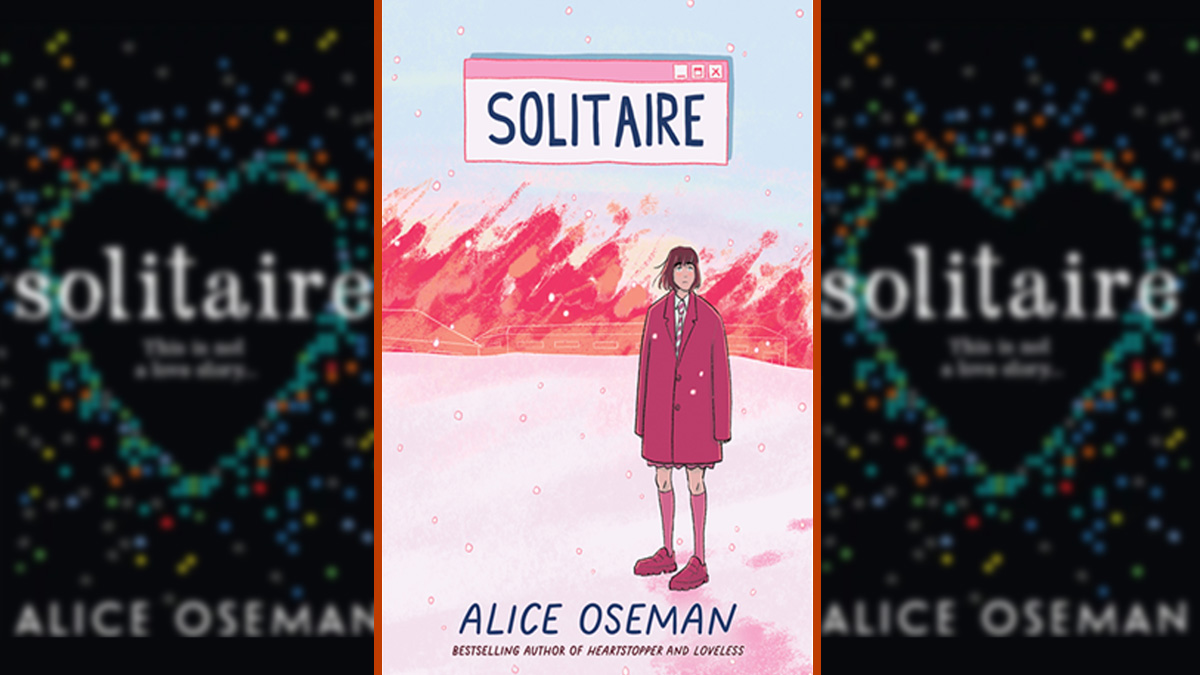Netflix’s Heartstopper may be less than a year old, but the coming-of-age romance has already endeared itself to fans across the globe. With season 2 well on its way, fans of the literary versions of Charlie and Nick are starting to wonder what Netflix intends to do with the story going forward.
The series follows Charlie – a sweet but bullied openly gay boy at an all-boys school as he develops an unlikely friendship with Nick, a sunbeam in human form and one of the more popular boys in the school. The story, though the typical romantic fair, manages to be captivating, dripping with adolescent joie de vivre, and fully embodying the sheer joy of the first day of summer vacation. But the squeal-inducing qualities of Nick and Charlie’s relationship didn’t start so achingly sweet. Charlie’s debut appearance in Solitaire, Alice Oseman’s first published novel, painted a very different picture of the lovebirds.
Solitaire is set several years after the events of the Heartstopper graphic novel and can be described as nothing short of a “blue period” for Oseman. It’s an emotionally raw novel filled with flawed people who — despite their shortcomings — manage to be incredibly lovable. It was originally released in 2014 when Oseman was 17 and she has since updated and rereleased the novel. For any Heartstopper stans out there who don’t mind seeing where Nick and Charlie’s relationship stands in a few years, I recommend picking up the 2023 rerelease. With more appropriate language and a little more love thrown Charlie’s way, it’s a much easier future to digest. But if you just want to hurt a little, go ahead and find a 2014 copy.
It seems that a spoiler warning should be evident considering the chronological position of the book, but just in case it wasn’t clear –
Spoiler, this article is going to expand on Charlie and Nick’s futures in a way that is definitely spoilery.
How are Charlie and Nick different in Solitaire?

Charlie’s lovable older sister Tori is the center focus of the novel, and the 17-year-old is dripping with contempt for her world and herself. Tori’s constant narrative monologue can be almost exhausting, but it paints that all-too-familiar picture of a self-deprecating teen. Tori — like Charlie — struggles to see her self-worth. This dark premise fully removes Solitaire from the buzzing golden-hour joy that pulsates through every moment of Heartstopper, and yet, even through the miasma of Tori’s disgust with life, there is still that one pinprick of light.
If you guessed I was about to launch into a rant about Nick and Charlie, you’d be right. Though they appear as secondary characters in the 2014 version, they are much more prevalent in the rewrite – and it makes sense, Charlie and Nick are her most popular characters, even if they debuted as tertiary ones.
The novel version of Charlie varies wildly depending on which release you read, but no matter what copy you pick up, he has a semblance of that angst that controls his sister’s life. Charlie is mentally unwell but so incredibly worthy of love, there’s little wonder why he became such a wildly popular part of Oseman’s universe. He feels the same self-hate, has an eating disorder, and suffers from anxiety and depression – but doesn’t let it define him. He isn’t unlovable because of his broken pieces, but the opposite, he’s lovable because through it all he never stops trying to right the wrongs.
The original release may have less sensitive language around his mental health and dramatize some things that it shouldn’t, but it does a splendid job of painting a nuanced character. The rerelease cleans up some of the darker or problematic language and pushes Charlie ahead in his recovery. Both versions are enjoyable, but for very different reasons, and Charlie is largely the same throughout.
Nick fans, however, should stick to the rerelease. To say that fans of the graphic novel were jarred by the differences would be an understatement. These quotes do an accurate job of describing just how much Nick Nelson was reworked. The 2014 version describes him as, “…One of those laddish lads who actually is into all those stereotypical things like rugby and beer and swearing and all that…”
There is absolutely nothing wrong with masculine bi or gay men, and it may be disappointing to some to see the hyper-masculine, gruff man who defies traditional stereotypes transformed into a cuddly bear of a boy, but Heartstopper is precious because of the incredibly wholesome nature of its main characters. And with fantastic representation like that found in The Last of Us — for example — it’s nice to see other avenues of gayness explored.
The 2023 version of Nick is described as, “look[ing] exactly like the kind of scary lads you’d see crammed at the back of the school bus, ready to throw sandwiches at you. But in reality, Nick is actually the human embodiment of a golden retriever puppy.” Now that’s what we’re looking for. Nick still looks like some formidable tough guy, but he has a heart of gold to belay the imposing nature of his appearance.
While the couple certainly struggles with Charlie’s mental health, their shortcomings, and other obligations that pull them in opposite directions, Solitaire is still an excellent snapshot at what their lives look like after Charlie’s mental health starts to suffer. Through thick and thin, they are still there for each other, and even as the reader’s heart aches for all of the pain the pair is working through, there is plenty of joy to be found.
Thanks to Netflix’s adaptation and Oseman’s willingness to rework her debut novel, fans have been given multiple variations of these characters to fall in love with. No matter which version of the story fans choose to ingest, they get a fantastic romance that will stick with them long after the credits roll and the final page has been turned.

